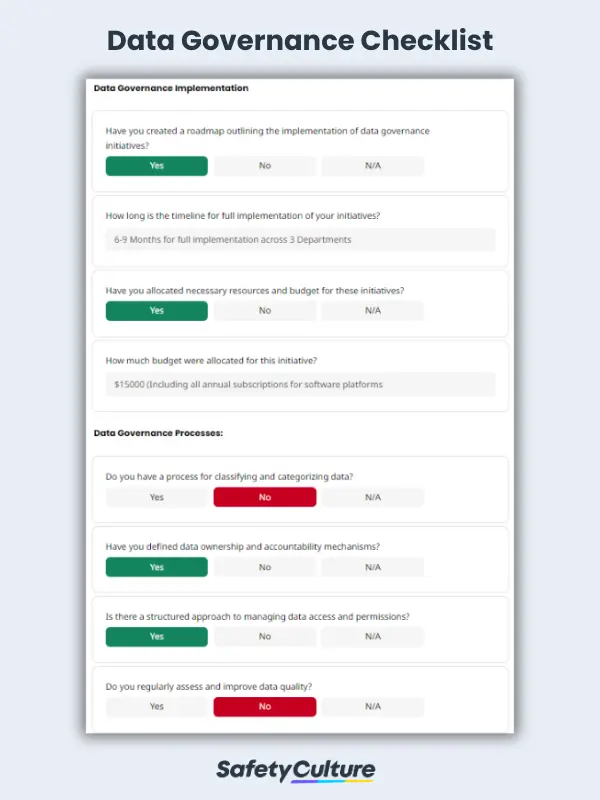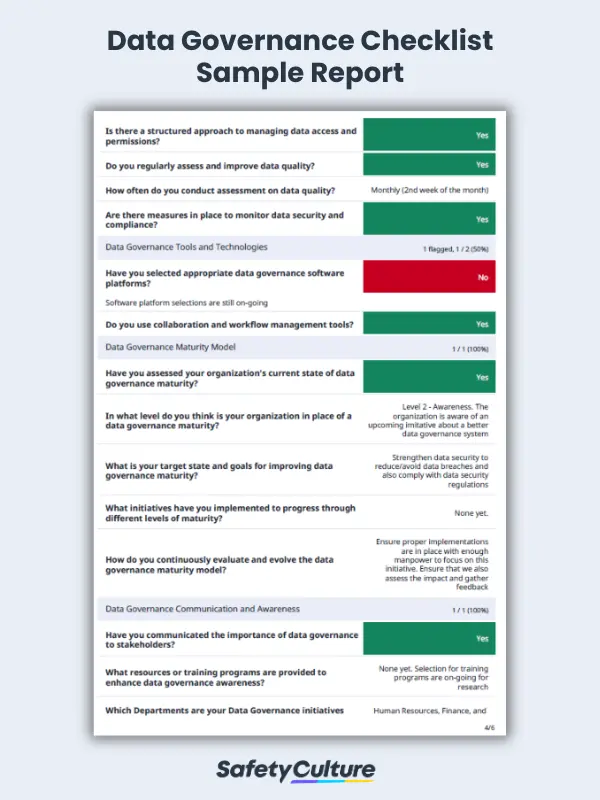What is a Data Governance Checklist?
A data governance checklist is a tool used to ensure that organizations can effectively manage their data assets and processes in line with best practices and regulatory standards. It outlines key components related to data access, privacy, security, quality, and management.
Importance and Benefits
Data governance is a crucial framework for managing, protecting, and ensuring the quality of an organization’s data assets. A data governance checklist serves as a structured guide to implementing and maintaining effective data governance practices:
- Data Quality: A data governance checklist helps establish standards and procedures for data quality management, ensuring that data is accurate, consistent, and reliable.
- Regulatory Compliance: By adhering to a data governance checklist, organizations can ensure compliance with various data protection regulations such as EU’s General Data Protection Regulation (GDPR) and the US’ California Consumer Privacy Act (CCPA) and Health Insurance Portability and Accountability Act (HIPAA). This helps mitigate legal risks and avoid hefty fines resulting from non-compliance.
- Risk Management: Implementing a data governance checklist enables organizations to identify and mitigate potential risks associated with data breaches, loss, or unauthorized access. By defining roles, responsibilities, and access controls, organizations can enhance data security and reduce vulnerabilities.
- Enhanced Data Transparency and Accountability: Using a data governance checklist, organizations can cultivate transparency and accountability regarding data handling practices.
- Data Lifecycle Management: By incorporating data governance principles into every stage of the data lifecycle (from creation to archival), organizations can effectively manage data throughout its lifespan, ensuring its relevance, integrity, and accessibility.
Components of a Data Governance Checklist
The contents of a data governance checklist may depend on the nature of your business and industry. In most case, they would include essential components such as:
- Data Inventory and Classification: Identifying and categorizing data assets based on their importance and sensitivity.
- Data Quality Assessment: Evaluating the accuracy, completeness, and reliability of data to maintain high-quality information.
- Data Access Control: Implementing measures to regulate and monitor who has access to data, ensuring only authorized personnel can view or modify it.
- Data Security Measures: Establishing protocols to protect data from unauthorized access, breaches, or loss.
- Data Privacy Compliance: Ensuring that data handling practices adhere to relevant privacy regulations and standards.
- Data Retention Policies: Defining guidelines for how long data should be stored, when it should be deleted, and how it should be archived.
Frequently Asked Questions (FAQs)
A data governance checklist is designed for use by various stakeholders within an organization, including data stewards, data managers, IT professionals, compliance officers, executives, and other personnel responsible for data governance and management.
No, this checklist shouldn’t be used just once. Since data governance is an ongoing process, a data governance checklist should be regularly reviewed, updated, and adapted to reflect changes in regulatory requirements, technology advancements, and organizational needs. Regular audits and assessments are also necessary to ensure continued compliance and effectiveness.
A data governance checklist provides guidelines and procedures for managing data in accordance with regulatory requirements such as GDPR, CCPA, HIPAA, and others. By ensuring data is handled responsibly, stored securely, and accessed only by authorized individuals, organizations can demonstrate compliance with relevant regulations and avoid potential fines or legal consequences.




